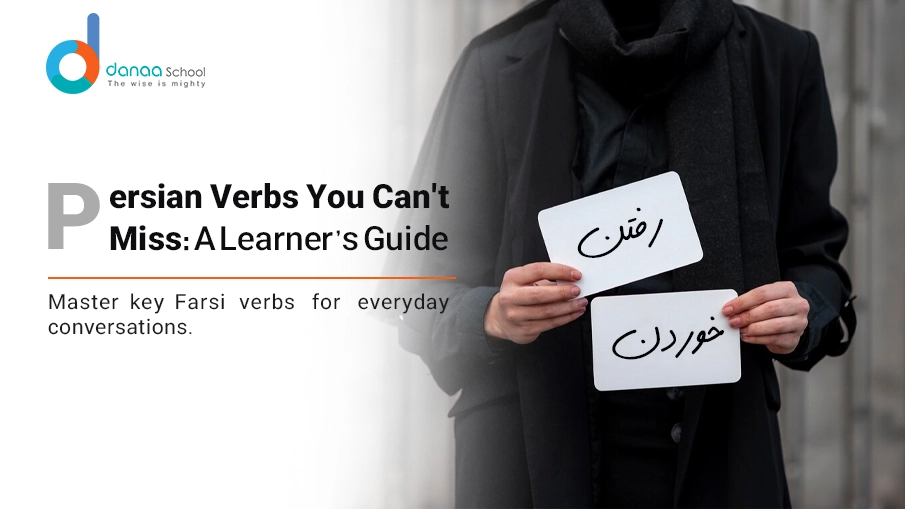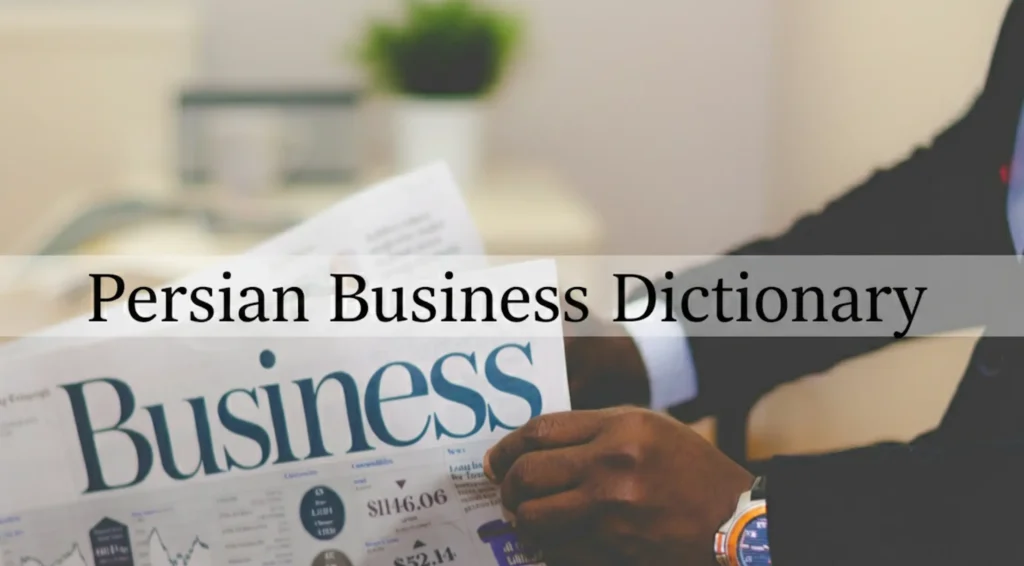Learning Persian (Farsi) is an enriching journey that opens the doors to Iranian culture, literature, and communication. Mastering this beautiful language requires a strong foundation in verbs. Verbs are the backbone of any sentence, and understanding their conjugation, meaning, and usage is critical for fluency.
This guide explores essential Persian verbs, their meanings, conjugation, and how to use them in the present tense. By focusing on these, learners can quickly elevate their language skills.
Why Mastering Essential Persian Verbs is Important
Persian verbs form the core of communication. Without them, expressing actions, intentions, or emotions becomes almost impossible. Persian verbs are versatile, allowing learners to describe the present, past, and future precisely. Mastering common Persian verbs builds confidence in conversations, writing, and comprehension.
Understanding Persian Verbs: The Basics
-
- The Root and Structure of Persian Verbs
Persian verbs consist of two main parts:
-
- The Root: The core meaning of the verb.
-
- Prefixes and Suffixes: Added to indicate tense, mood, or subject.
For example:
-
- Root: “رفتن” (raftan) – to go.
-
- Present tense: “میروم” (miravam) – I go.
-
- Verb Conjugation in Persian
Persian verbs conjugation varies depending on:
-
- Tense (present, past, future).
-
- Person (first, second, third).
-
- Formality (formal or informal tone).
Essential Persian Verbs List
Below is a list of some of the most common Persian verbs every learner should know:
| Persian Verb | Meaning | Example Sentence |
| رفتن (raftan) | To go | من به مدرسه میروم. (I go to school.) |
| آمدن (amadan) | To come | او به خانه میآید. (He comes home.) |
| دیدن (didan) | To see | من فیلم دیدم. (I saw a movie.) |
| گفتن (goftan) | To say | او حقیقت را گفت. (He said the truth.) |
| خوردن (khordan) | To eat | من ناهار خوردم. (I ate lunch.) |
Essential Persian Verbs with Their Meanings
-
- داشتن (dashtan) – To have
This verb is used to indicate possession or existence.
Example: من یک کتاب دارم. (I have a book.)
-
- بودن (boodan) – To be
Often used as a linking verb in sentences.
Example: او معلم است. (He is a teacher.)
-
- خواستن (khastan) – To want
Useful for expressing desires or preferences.
Example: من چای میخواهم. (I want tea.)
-
- دادن (dadan) – To give
A versatile verb for transactions or offerings.
Example: او کتاب را به من داد. (He gave me the book.)
-
- کردن (kardan) – To do
Commonly used in compound verbs.
Example: من تکلیفم را انجام دادم. (I did my homework.)
Persian Verbs in the Present Tense
- Formation of Present Tense
To conjugate Persian verbs in the present tense, a prefix is added to the verb root:
-
- می + root + personal ending.
For example:
-
- Verb: رفتن (to go).
-
- Present tense: میروم (miravam) – I go.
Examples of Common Verbs in Present Tense
-
- رفتن: میروم، میروی، میرود (I go, you go, he/she goes).
-
- آمدن: میآیم، میآیی، میآید (I come, you come, he/she comes).
-
- دیدن: میبینم، میبینی، میبیند (I see, you see, he/she sees).
Common Persian Verbs Used in Daily Life
- Action Verbs
-
- خریدن (kharidan) – To buy.
Example: من میوه خریدم. (I bought fruit.)
- خریدن (kharidan) – To buy.
-
- پوشیدن (pooshidan) – To wear.
Example: او لباس میپوشد. (He wears clothes.)
- پوشیدن (pooshidan) – To wear.
- Emotion Verbs
-
- دوست داشتن (doost dashtan) – To like/love.
Example: من او را دوست دارم. (I like/love him/her.)
- دوست داشتن (doost dashtan) – To like/love.
-
- ترسیدن (tarsidan) – To fear.
Example: من از تاریکی میترسم. (I fear the dark.)
- ترسیدن (tarsidan) – To fear.
Find Your Ideal Teacher
At Danaa School, you can choose your Farsi tutor from a selection of qualified and experienced teachers. Begin an exceptional journey into the world of Persian language!
Book Your Trial Lesson
Learning Persian Verbs with Conjugation
- The Present Continuous Form
This form indicates ongoing action:
-
- دارم + verb.
Example: دارم کتاب میخوانم. (I am reading a book.)
- دارم + verb.
- Irregular Verbs in Persian
Some verbs have unique conjugation patterns, such as:
-
- بودن (to be).
Present tense: هستم (hastam) – I am.
- بودن (to be).
Tips for Learning Essential Persian Verbs
- Start with the Basics: Focus on verbs most frequently in conversations.
- Practice Conjugation: Use charts or apps to memorize verb endings for each tense.
- Immerse in Persian Media: Watch Iranian movies or listen to Persian songs to hear verbs in action.
- Use Flashcards: Write verbs on one side and their meanings on the other.
FAQs
How do you conjugate Persian verbs?
Persian verbs are conjugated by adding prefixes and suffixes to the root. For example, in present tense, you add می before the root.
What are some easy Persian verbs for beginners?
Beginner-friendly verbs include رفتن (to go), دیدن (to see), and بودن (to be).
Is Persian verb conjugation hard to learn?
It requires practice but is easier than some other languages due to consistent rules.
What are common Persian verbs in present tense?
Common ones include خوردن (to eat), خریدن (to buy), and پوشیدن (to wear).
Can I learn Persian verbs quickly?
Yes, with consistent practice and the right resources, such as flashcards and apps.
How do verbs in Persian differ from English?
Persian verbs have simpler tenses but require familiarity with roots and prefixes.
Conclusion
Mastering essential Persian verbs is a significant milestone in learning the Persian language. Learners can build confidence and fluency by understanding their meanings, conjugations, and usage in context. Whether planning a trip to Iran, studying Persian literature, or expanding your linguistic horizons, a strong foundation in Persian verbs will ensure success. Sign up now.
Want to Learn Farsi at Danaa School?
Here are the best resources for you!







